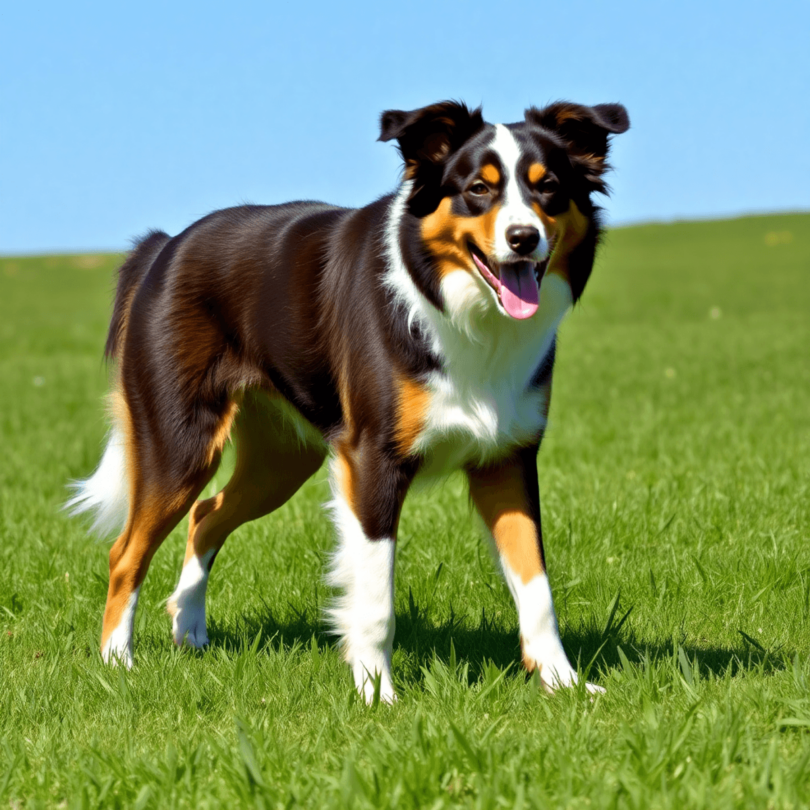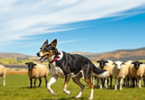Australian Shepherd Size and Physical Characteristics: A Detailed Look
Meet the Australian Shepherd, a medium-sized dog breed full of energy and charm! Known for their athleticism and intelligence, these dogs have won the hearts of many.
For potential owners, it’s important to understand the size and physical characteristics of Australian Shepherds. Why? Because size is a key factor in behavior, health, and even the level of care needed. Here are some important things to think about:
- Size Matters: The height and weight of an Australian Shepherd can affect their exercise needs and overall temperament.
- Physical Traits: Their muscular build and unique coat types give clues about their agility and grooming requirements.
- Health Implications: Knowing common health issues related to size can help with early detection and prevention.
In this article, we’ll explore the fascinating world of Australian Shepherd size and physical characteristics. We’ll cover topics such as the differences between standard and miniature Aussies, as well as their striking eye colors!
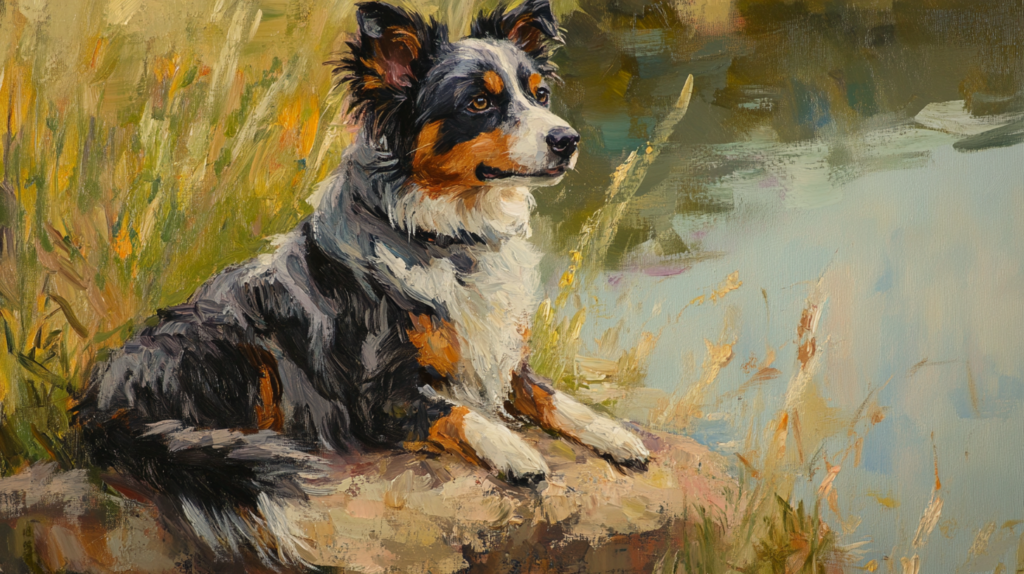
Understanding the Size of Australian Shepherds
When looking into Australian Shepherd size, you’ll find a wonderful variety of heights and weights within this beloved breed. Let’s break it down:
Typical Height and Weight
Male Australian Shepherds:
- Height: 20 to 23 inches
- Weight: 50 to 65 pounds
Female Australian Shepherds:
- Height: 18 to 21 inches
- Weight: 40 to 55 pounds
These measurements show that there is a difference in size between male and female Australian Shepherds, with males generally being larger and more robust than females.
Comparison Between Male and Female Sizes
When comparing Australian Shepherd height and weight, it’s clear that the size differences could impact their physical abilities. Males are usually more muscular, which adds to their strength during activities like agility training or herding. Females, although slightly smaller, have an agile build that allows for impressive speed and quickness.
Factors Influencing Size Variations
Several factors can affect the size differences within the breed:
- Genetics: Like many breeds, genetics play a significant role in determining how big an Australian Shepherd will become.
- Nutrition: A balanced diet during the puppy stage is crucial for healthy growth. Proper nutrition ensures they reach their genetic potential without being overweight.
- Exercise: Regular physical activity encourages muscle development and overall health, which can also influence size.
- Environmental Factors: Stress levels and living conditions may also impact growth patterns.
Understanding these factors helps potential owners get an idea of how big Australian Shepherds can grow. With proper care, these pups can thrive and maintain a healthy weight while showing off their playful personalities.
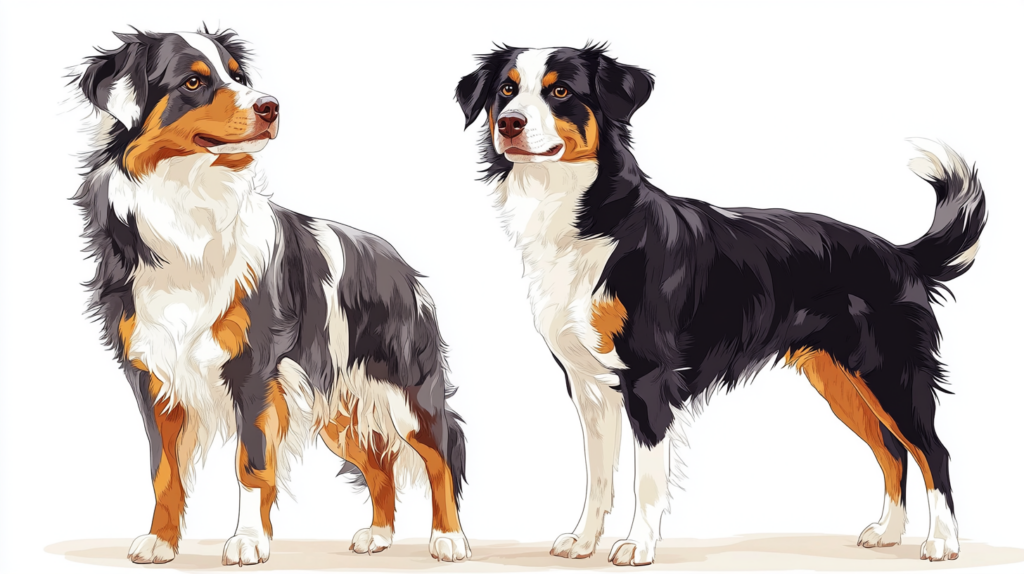
Exploring Miniature Australian Shepherds
Miniature Australian Shepherds, often affectionately called “Mini Aussies,” are a delightful variation of the standard breed. These pint-sized pups still pack plenty of personality and charm, capturing the hearts of dog lovers everywhere.
Size Matters
- Height: Mini Aussies typically measure between 14 to 18 inches.
- Weight: Their weight ranges from 20 to 40 pounds.
Key Differences Between Standard and Mini Sizes
Understanding the distinctions between the Standard and Mini Australian Shepherds can help potential owners choose the right fit for their lifestyle.
Temperament:
- Both sizes share an intelligent and loyal nature.
- Mini Aussies may exhibit a slightly more playful demeanor, making them ideal for families with young children.
Exercise Needs:
- While both require regular exercise, Mini Aussies can adapt well to smaller living spaces.
- They still thrive on daily walks and playtime, but their energy levels may be a tad lower than their larger counterparts.
Training:
- Training is essential for both sizes to harness their intelligence.
- Miniature Australian Shepherds can sometimes be more stubborn, so consistent positive reinforcement techniques work wonders.
These adorable little dogs embody the same herding instincts as their larger relatives while offering a compact size perfect for various living situations. Understanding these nuances can aid in making informed decisions for prospective pet owners or breeders alike.
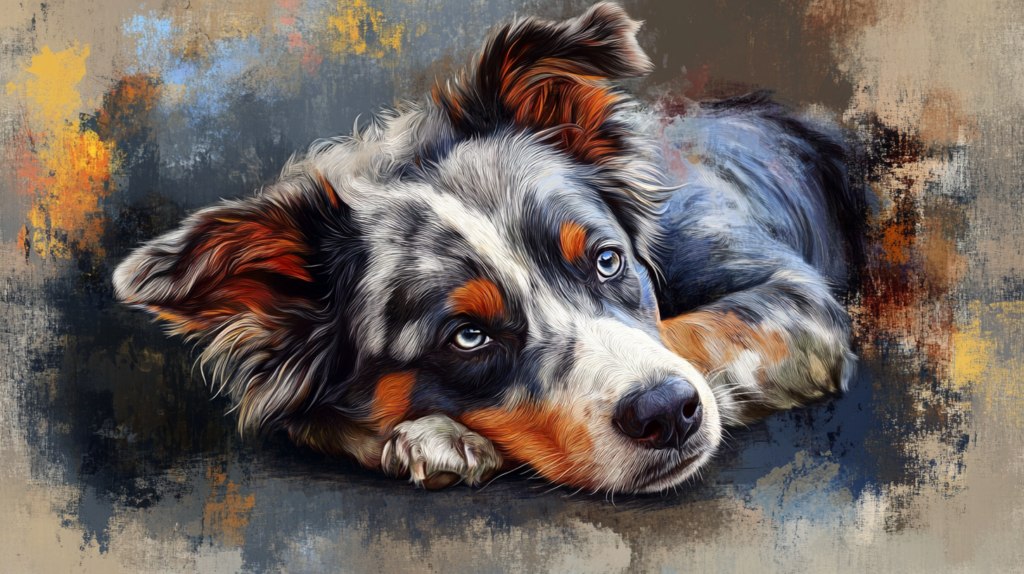
Physical Traits That Define the Australian Shepherd Breed
Australian Shepherds are truly a sight to behold, showcasing physical traits that reflect their athletic build and natural instincts as herding dogs. These qualities not only contribute to their appearance but also enhance their performance in various activities.
Key Physical Characteristics
- Muscular Bodies: With a solid structure, Australian Shepherds possess well-defined muscles that support their energetic lifestyle. This muscularity allows them to engage in vigorous activities like herding and agility training.
- Large Bones: Their sturdy bone structure adds to their durability, making them resilient against the wear and tear of an active life. This robustness is essential for any dog that thrives on exercise and play.
- Low Center of Gravity: A defining feature of the breed, the low center of gravity enhances balance and agility. This trait enables them to maneuver quickly, an important skill for herding tasks and sports.
Gorgeous Coat Types
The coat of an Australian Shepherd is as striking as its physique. The breed typically has a dense double coat that varies in texture:
- Straight vs. Wavy: Some Aussies flaunt straight hair, while others exhibit a wavy coat. Both types offer protection from weather elements, making them well-suited for outdoor activities.
Colorful Fur Coats
Aussies come adorned in a variety of stunning colors that captivate dog lovers everywhere. Popular coat colors include:
- Black: A classic choice often with white or tan markings.
- Red: A beautiful hue ranging from light to deep shades, frequently accompanied by white accents.
- Blue Merle: This unique pattern features a mottled gray-blue coat with darker patches. It’s one of the most sought-after patterns among enthusiasts.
- Red Merle: Similar to blue merle but with reddish tones, this striking coat pattern stands out in any setting.
These vibrant hues and patterns make each Australian Shepherd distinct, showcasing their individuality.
Grooming Needs
With such a stunning coat comes the responsibility of grooming. Regular brushing is essential due to shedding, which can be quite significant during seasonal changes. Keeping up with grooming not only maintains the health of their coat but also strengthens the bond between you and your Aussie. It’s worth noting that different dog breeds have varying hygiene needs, so understanding these requirements can greatly help in maintaining your pet’s health.
Understanding these physical traits enhances your appreciation for the breed’s capabilities and charm. With their athletic build and breathtaking coats, Australian Shepherds are ready to take on any adventure alongside you!
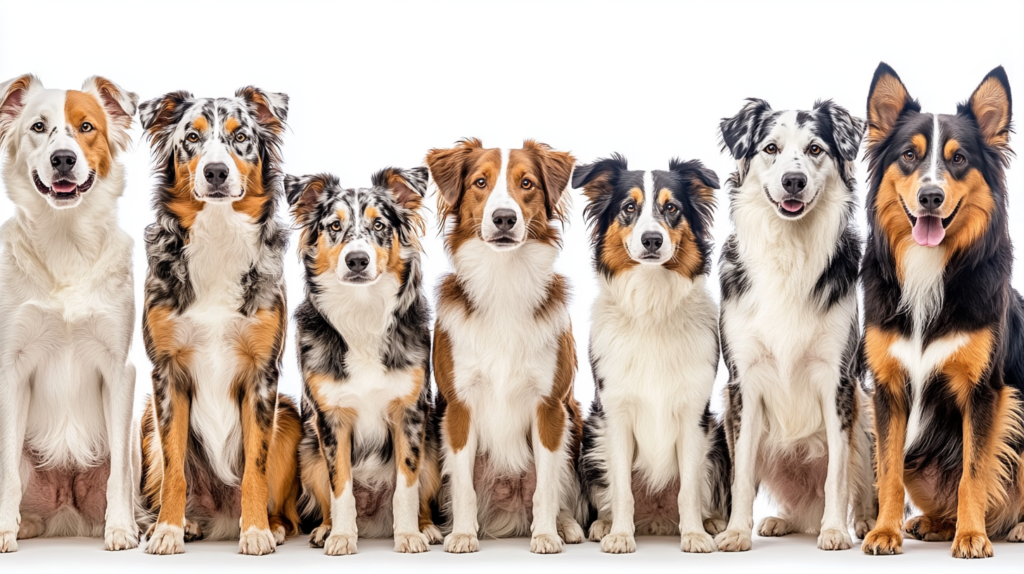
Eye Colors in Australian Shepherds: What You Need to Know
The mesmerizing eyes of Australian Shepherds are one of their most captivating features. A variety of eye colors can be observed in this breed, each contributing to their unique charm.
Common Eye Color Variations
- Blue: A striking and popular choice, often associated with the breed’s herding background.
- Green: Less common, this hue adds an exotic touch to their appearance.
- Hazel: A warm blend that can vary from light to darker shades, creating a soft yet captivating look.
- Brown: The most traditional color, found in many breeds, including Aussies.
Significance of Eye Color
Eye color isn’t just for aesthetics. It plays a crucial role in breed standards set by kennel clubs. For instance:
- Breed Standards: Specific eye colors may be preferred or even required for show quality. Blue eyes are often celebrated but can also lead to mixed opinions among judges.
- Health Implications: Certain eye colors can indicate genetic predispositions to health issues. For example, blue-eyed dogs may have a higher risk of certain ocular diseases.
Understanding these nuances helps potential owners appreciate the complexity of Australian Shepherds beyond their playful demeanor. The variety in eye colors reflects not just beauty but also the importance of responsible breeding practices aimed at maintaining the overall health and integrity of this beloved breed.
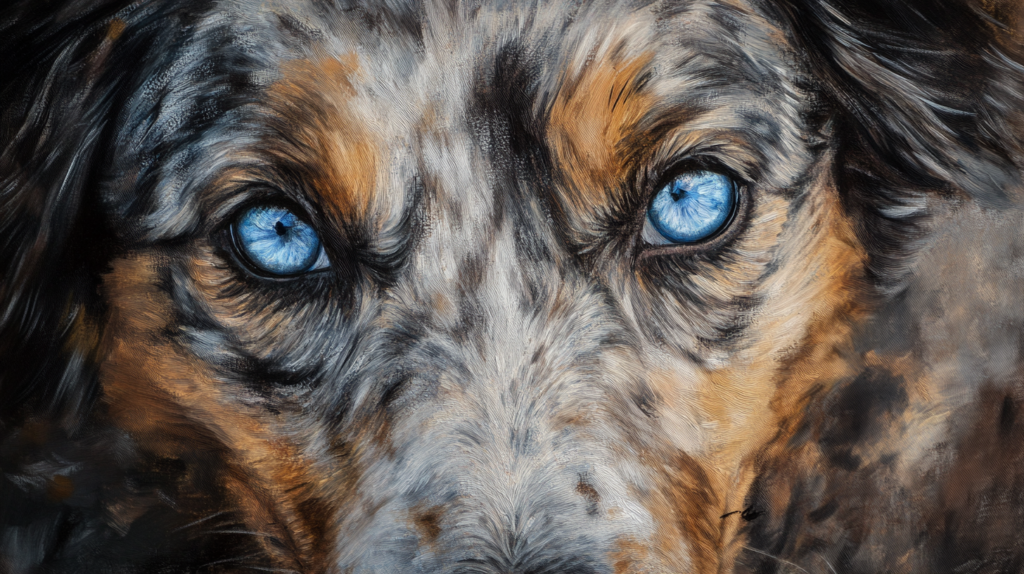
The Growth Journey of an Australian Shepherd: From Puppy to Adult Size
The growth journey of an Australian Shepherd is nothing short of fascinating. Understanding the Australian Shepherd growth chart helps owners navigate the various stages and milestones as their pup transforms into a majestic adult.
Typical Growth Timeline
Birth to 2 Weeks
Puppies are born weighing around 1 pound. They are entirely dependent on their mother for nourishment and warmth.
2 to 8 Weeks
Rapid growth occurs during this period. By 8 weeks, puppies typically weigh between 8 to 12 pounds and start developing basic social skills through interactions with their littermates.
3 to 6 Months
During this stage, the focus shifts to physical development. Male puppies can weigh between 20 to 30 pounds, while females may range from 15 to 25 pounds. Their coordination improves significantly as they begin exploring their environment.
6 to 12 Months
Growth slows down but continues. Males will generally weigh around 35 to 50 pounds, while females reach about 30 to 40 pounds. This is also when the infamous “puppy crazies” can kick in, leading to bursts of energy!
12 Months and Beyond
The majority of Australian Shepherds reach their adult height by this stage, typically standing between 18-23 inches tall depending on gender. Full weight is achieved by around 18-24 months, with males weighing between 50-65 pounds and females weighing 40-55 pounds.
Milestones in Development Stages
Becoming familiar with key milestones is essential for any owner:
- Socialization Window (3-14 Weeks): Critical for developing temperament; exposing them to various environments, people, and other animals is vital.
- Training Period (4-6 Months): Start basic obedience training early; these pups are eager learners!
- Physical Maturity (1-2 Years): Dogs should be fully grown physically but may still exhibit playful puppy behavior.
Tracking these stages assists owners in providing proper care tailored to their Aussie’s evolving needs, ensuring a happy transition from playful puppyhood to a confident adult.

Understanding the Aussie Breed Standard: Physical Appearance Criteria You Should Know About
The Aussie breed standard serves as a blueprint for the ideal Australian Shepherd, outlining specific physical appearance criteria to ensure breed integrity. Major kennel clubs like the American Kennel Club (AKC) and the United Kennel Club (UKC) provide detailed descriptions that breeders and enthusiasts should familiarize themselves with.
Key elements of the Aussie breed standard include:
- Size: Males typically measure 20 to 23 inches, while females range from 18 to 21 inches in height.
- Weight: Males weigh between 50 to 65 pounds; females weigh 40 to 55 pounds.
- Coat: The double coat can be straight or wavy, featuring various colors such as black, red, blue merle, and red merle.
- Build: A solid, muscular body with a low center of gravity promotes agility and strength.
Adhering to these standards is crucial for breeders aiming to maintain the integrity of the breed. By following established guidelines, breeders can reduce the risk of genetic health issues while preserving the unique traits that define the Australian Shepherd. This commitment ensures future generations embody the energetic spirit, intelligence, and beautiful physical characteristics that make this breed so beloved.
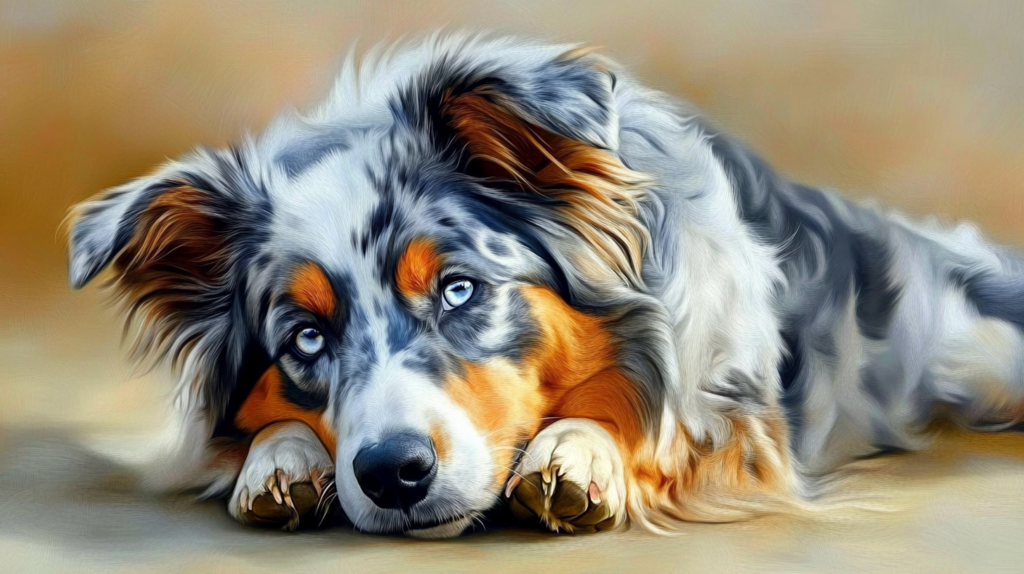
Caring For Your Aussie: Tips Based On Their Unique Size And Physical Traits
Caring for your Australian Shepherd involves understanding their unique size and physical traits. This energetic breed thrives on regular exercise to maintain a healthy weight and physique. Here are some essential dog care tips for Australians:
Exercise Requirements
- Standard Australian Shepherds: Aim for at least 1 to 2 hours of vigorous exercise daily. Activities like running, hiking, or playing fetch will keep them fit and happy.
- Miniature Australian Shepherds: These pint-sized pooches still need about 30 minutes to 1 hour of exercise each day. Shorter, more frequent play sessions work wonders.
Mental Stimulation
Australian Shepherds are not just physical dynamos; they are also mental powerhouses. Keeping their minds engaged is crucial to prevent behavioral issues such as boredom-induced destruction or excessive barking. Consider these activities:
- Interactive toys: Puzzle feeders can challenge their problem-solving skills.
- Training sessions: Teach new tricks or commands, turning learning into a fun game.
- Agility training: Set up a mini obstacle course in your backyard for both physical and mental challenges.
Healthy Lifestyle
Maintaining a well-rounded routine that includes both physical exercise and mental stimulation ensures your Aussie remains balanced and well-adjusted. A tired dog is a happy dog! Regular activity not only supports their fitness but also strengthens the bond between you and your furry friend.
With proper care, these delightful dogs will thrive in active households where they can unleash their energy and intelligence daily.
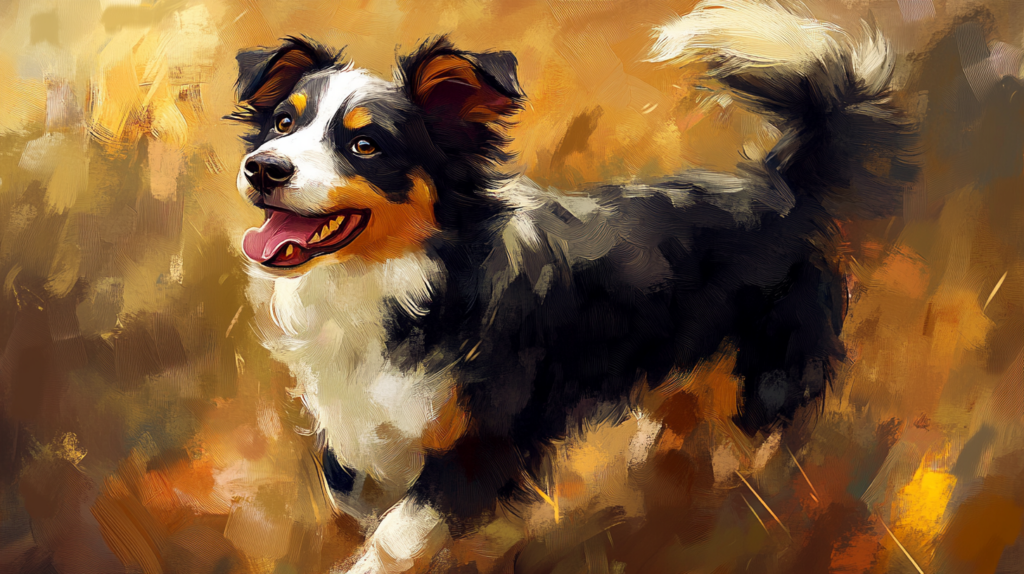
Conclusion
Considering the size and physical characteristics of Australian Shepherds is vital for potential owners and breeders alike. Here are some key points to reflect on:
- Understanding Traits: Australian Shepherds possess a unique blend of athleticism, intelligence, and loyalty, making them an ideal companion for active families.
- Size Matters: The breed’s standard size ranges from medium to miniature, impacting their exercise requirements and living conditions.
- Family Fit: These dynamic dogs thrive in environments where they can engage in regular physical activities and mental challenges.
Adopting or breeding an Australian Shepherd means committing to meet their energetic needs. Families ready to provide ample exercise will find a loving, trainable companion that thrives on interaction and activity. Embrace the joy these remarkable pups bring to your life!
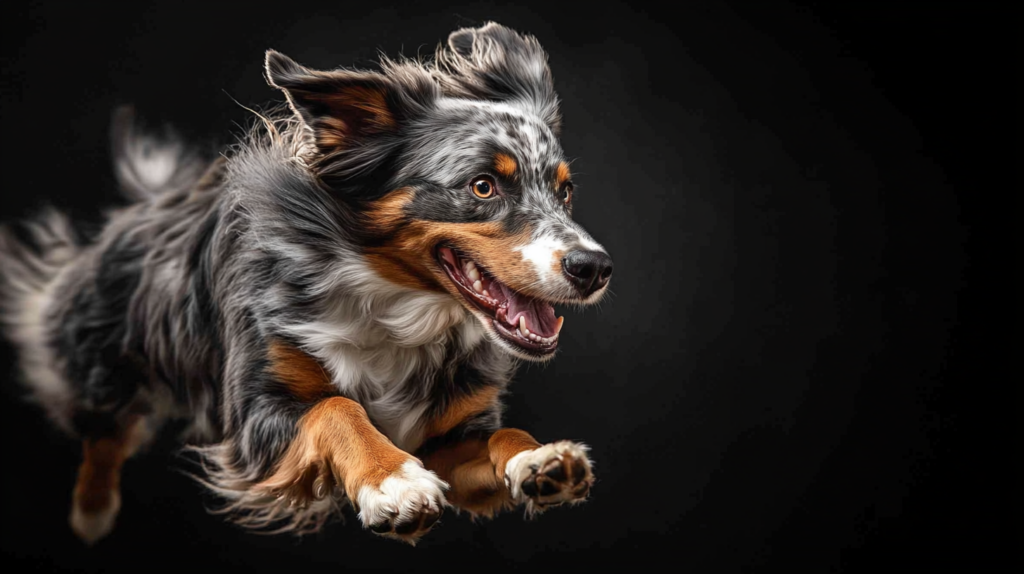
FAQs (Frequently Asked Questions)
What is the typical size of an Australian Shepherd?
Australian Shepherds are medium-sized dogs, with male Aussies typically weighing between 50-65 pounds and standing 20-23 inches tall at the shoulder, while females usually weigh between 40-55 pounds and stand 18-21 inches tall.
What are the differences between standard and miniature Australian Shepherds?
Miniature Australian Shepherds are smaller than their standard counterparts, generally weighing between 20-40 pounds and standing about 13-18 inches tall. They differ in temperament and exercise needs, with mini Aussies often requiring less space but still needing regular activity.
What physical traits define the Australian Shepherd breed?
Australian Shepherds are characterized by their athletic build, muscular bodies, large bones, and low center of gravity which enhances their agility. They have unique coat types that can be straight or wavy and come in various colors including black, red, blue merle, and red merle.
What eye colors are common in Australian Shepherds?
Australian Shepherds exhibit a variety of eye colors, including blue, green, hazel, and brown. Eye color can have significance in breed standards and may also indicate potential health implications.
How does an Australian Shepherd grow from puppy to adult size?
The growth journey of an Australian Shepherd typically includes several stages. Puppies grow rapidly in the first few months; a detailed growth chart can help owners track their development milestones until they reach their adult size around one year of age.
What care tips should I consider for my Australian Shepherd based on their size and traits?
Caring for your Aussie involves meeting their exercise needs to maintain a healthy weight and physique. Regular mental stimulation is crucial for this high-energy breed to prevent behavioral issues. Grooming is also important due to shedding from their unique coat types.
